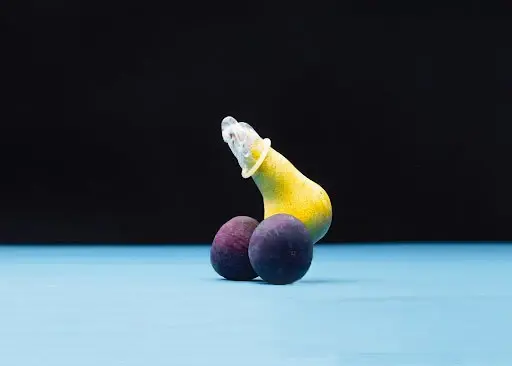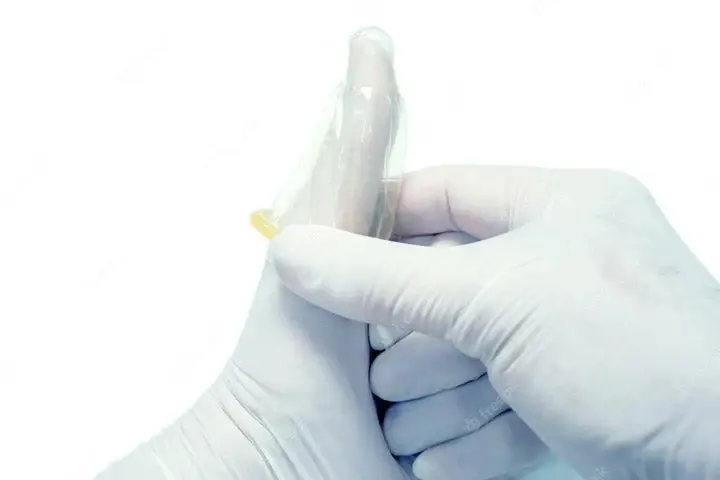Exploring Different Types of Condom Catheters: Which One Is Best for You?

Urinary incontinence affects millions worldwide, causing embarrassment, social isolation, and low self-confidence. Condom catheters offer a discreet and effective solution for men, providing comfort, independence, and control. This comprehensive guide explores the different types of condom catheters, including traditional, self-adhering, and reusable options, to help you choose the best one for your needs, lifestyle, and medical requirements.
Discover the key features, benefits, and considerations for each type of condom catheter, including:
- Traditional external condom catheters
- Self-adhering condom catheters
- Reusable condom catheters
Make an informed decision and find the right condom catheter for your urinary incontinence needs.
Understanding Condom Catheters
Condom catheters, also known as external or male catheters, are non-invasive devices specifically designed for men to manage urinary incontinence. They resemble a condom in appearance, fitting over the penis to collect urine as it is expelled.
The catheter is then connected to a drainage bag which collects the urine and can be easily emptied when necessary. Condom catheters provide a discreet and comfortable solution for managing incontinence without the need for invasive procedures such as indwelling catheters.
What are the Benefits and advantages over other catheter types?
Condom catheters offer several advantages over other types of catheters including:
- Non-invasive: Unlike indwelling catheters, condom catheters do not require insertion into the body reducing the risk of infection and providing a more comfortable experience for users.
- Discreet: Condom catheters can be easily concealed under clothing allowing users to maintain their privacy and dignity while managing their condition.
- Easy to use: Application and removal of condom catheters are generally simple and can be done by the user promoting independence and self-care.
- Reduced risk of complications: The non-invasive nature of condom catheters significantly lowers the risk of urinary tract infections (UTIs) and other complications associated with indwelling catheters.
Selecting the right condom catheter requires careful consideration of various factors including material, size, adhesive type and duration of use. It is essential to understand the specific features and benefits of each type of condom catheter to ensure a comfortable, secure and effective solution for managing urinary incontinence.
Additionally, consulting with a healthcare professional can provide valuable guidance and recommendations based on individual needs and medical history.
Types of Condom Catheters
-
Traditional External Condom Catheters
Material options (latex, silicone, polyurethane)
Traditional external condom catheters are available in a variety of materials, including latex, silicone and polyurethane. Latex is the most common material, as it is affordable, flexible and provides a secure fit. However, some individuals may have latex allergies or sensitivities making silicone or polyurethane alternatives more suitable. Silicone and polyurethane catheters are hypoallergenic and generally more durable than latex.
Adhesive types (adhesive strip, adhesive film)
Traditional external condom catheters require an adhesive to secure them to the penis. Two common adhesive types include adhesive strips and adhesive films. Adhesive strips are typically applied around the base of the penis while adhesive films cover the entire inner surface of the catheter. The choice of adhesive type depends on personal preference, skin sensitivity and desired level of security.
Pros:
- Affordable and widely available
- Variety of materials to suit individual needs
- Can be customized with preferred adhesive type
Cons:
- Some users may experience skin irritation from adhesives
- May require more frequent replacement compared to other types
-
Self-Adhering Condom Catheters
Integrated adhesive coating
Self-adhering condom catheters feature an integrated adhesive coating on the inner surface eliminating the need for separate adhesive strips or films. This design simplifies the application process and ensures a secure fit.
Application and removal process
To apply a self-adhering condom catheter, simply roll the catheter onto the penis like a condom ensuring the adhesive makes full contact with the skin. The removal process is also straightforward involving gently rolling the catheter off the penis while supporting the skin to prevent irritation or injury.
Pros:
- Simplified application and removal process
- Secure fit with integrated adhesive
- May be less irritating to the skin compared to traditional adhesive methods
Cons:
- May be more expensive than traditional external condom catheters
- Limited material options compared to traditional external catheters
-
Reusable Condom Catheters
Material and design options
Reusable condom catheters are typically made from high-quality durable materials like silicone or polyurethane, designed to withstand multiple uses. They may come in various designs such as adjustable straps or Velcro closures to ensure a secure and comfortable fit.
Cleaning and maintenance requirements
To maintain hygiene and prolong the life of a reusable condom catheter, users must clean the device thoroughly after each use according to the manufacturer's instructions. This may involve washing with mild soap and water, rinsing, and air drying.
Pros:
- Cost-effective in the long term due to multiple uses
- Environmentally friendly option
- Adjustable designs for improved comfort and fit
Cons:
- Requires regular cleaning and maintenance
- May be less convenient for those with limited dexterity or mobility
Factors to Consider When Choosing a Condom Catheter
Size and fitImportance of proper sizing
Proper sizing is essential when selecting a condom catheter to ensure a secure, comfortable fit that effectively manages urinary incontinence. An ill-fitting catheter can lead to leaks, discomfort and skin irritation, significantly impacting the user's quality of life.
Measuring for the right size
To determine the correct size measure the circumference of the penis at its widest point using a flexible measuring tape. Most manufacturers provide a sizing chart that correlates the circumference measurement to a specific catheter size (e.g., small, medium, large).
Adjusting for comfort
It's crucial to find a balance between a secure fit and comfort. The catheter should fit snugly without causing pain or excessive pressure on the penis. If the user experiences discomfort or skin irritation they should consider trying a different size or material.
Skin sensitivity and allergies
Identifying potential irritants (latex, adhesives)
Individuals with skin sensitivities or allergies need to be cautious when selecting a condom catheter. Common irritants include latex and certain adhesive materials. It's essential to choose a catheter made from hypoallergenic materials such as silicone or polyurethane and consider adhesive options that are gentle on the skin.
What are the Tips to Avoid Skin Irritation
To minimize the risk of skin irritation ensure the catheter is the correct size, clean and dry the skin before application and follow the manufacturer's instructions for applying and removing the device. Additionally, regularly inspect the skin for signs of irritation or injury and consult a healthcare professional if any concerns arise.
.webp?width=760&height=152&name=qc-banner%20(2).webp)
Lifestyle and activity level
Assessing daily routine and mobility needs
When choosing a condom catheter consider the user's daily routine and mobility needs. Active individuals may require a more secure adhesive method while those with limited dexterity might benefit from a self-adhering or reusable catheter with adjustable straps for easier application and removal.
Selecting a catheter based on activity level
Assess the user's activity level and choose a condom catheter that can accommodate their lifestyle without compromising comfort or security. This may involve considering factors such as durability, ease of use and the ability to withstand physical activity.
Duration of use
Short-term vs. long-term use considerations
Consider whether the condom catheter will be used for short-term or long-term management of urinary incontinence. For short-term use disposable catheters might be more convenient while reusable catheters may be a more cost-effective and environmentally friendly option for long-term use.
Balancing convenience with durability
When selecting a condom catheter, balance the need for convenience with durability. Disposable catheters may be more convenient for occasional use but they need to be replaced more frequently. Reusable catheters require cleaning and maintenance but can provide a long-lasting solution for managing urinary incontinence.
How to Properly Apply and Remove a Condom Catheter
Step-by-step guide to application
- Wash your hands thoroughly with soap and water.
- Gently clean and dry the penis to remove any dirt, sweat or residual urine.
- If using a traditional external condom catheter, apply the adhesive strip or film according to the manufacturer's instructions.
- For a self-adhering or traditional external condom catheter start at the tip of the penis and slowly unroll the catheter down the shaft ensuring a snug and secure fit.
- If using a reusable condom catheter with adjustable straps, position the catheter over the penis and secure the straps or closures making sure it is neither too tight nor too loose.
- Connect the catheter to the drainage bag according to the manufacturer's instructions ensuring there are no kinks or twists in the tubing.
Tips for ensuring a secure and comfortable fit
- Choose the correct size and material based on your measurements and skin sensitivities.
- Apply the catheter when the penis is in a flaccid state to ensure a proper fit.
- Ensure the adhesive is evenly distributed and makes full contact with the skin for a secure fit.
- Check for any wrinkles, folds or gaps in the catheter that may cause leaks or discomfort and adjust as necessary.
- Periodically inspect the catheter throughout the day to ensure it remains in place and is functioning correctly.
Safe removal and disposal of condom catheters
- Disconnect the catheter from the drainage bag ensuring the tubing is free of kinks or twists.
- If using a traditional external condom catheter carefully remove the adhesive strip or film from the skin.
- Gently roll the condom catheter off the penis supporting the skin to prevent irritation or injury.
- Dispose of disposable catheters in a sealed plastic bag and discard according to local regulations.
- If using a reusable condom catheter, clean and maintain the device according to the manufacturer's instructions and store it in a clean, dry place when not in use.
What are the Alternatives to Condom Catheters
While condom catheters are a popular choice for managing male urinary incontinence, there are other options available for those who may not find condom catheters suitable for their needs. In this section, we will provide a brief overview of alternative incontinence management options including incontinence wraps, absorbent pads, adult diapers, penile clamps and intermittent catheters.
Male Incontinence Wrap
QuickChange Male Incontinence Wrap is an innovative product designed to replace traditional catheters and diapers for adult men. This urine absorbent wrap quickly absorbs voided urine before it can touch the skin providing a comfortable and efficient solution for managing incontinence.
Pros: Easy and quick to change; reduces skin irritation and risk of urinary-tract infections; requires fewer staff members and time for changing; discreet and suitable for various care settings from home to medical facilities.
Cons: Availability might be limited in certain regions but can be ordered online.
Absorbent Pads and Guards
Absorbent pads and guards are designed to be worn inside underwear to absorb leaks and protect clothing. They are available in various absorbency levels, shapes and sizes to accommodate different levels of incontinence.
Pros: Discreet, easy to use and widely available; suitable for light to moderate incontinence.
Cons: May not be suitable for heavy or continuous incontinence; requires frequent changing to maintain hygiene.
Adult Diapers and Protective Underwear
Adult diapers and protective underwear are designed to provide full coverage and protection for moderate to heavy incontinence. They feature absorbent layers, moisture-wicking materials and odor control technology.
Pros: Suitable for various incontinence levels; available in disposable or reusable options; offers full coverage and protection.
Cons: Less discreet than pads or guards; may be more expensive than other options.
Penile Clamps
Penile clamps are external devices that apply gentle pressure to the penis to prevent urine leakage. They are typically adjustable to ensure a comfortable and secure fit.
Pros: Non-invasive, reusable and suitable for temporary or situational incontinence management.
Cons: May be uncomfortable for some users; requires careful application and removal to avoid injury; not suitable for continuous use.
Intermittent Catheters
Intermittent catheters are thin, flexible tubes that are temporarily inserted into the urethra to drain the bladder. They are used on an as-needed basis and removed after each use.
Pros: Provides direct bladder drainage; suitable for a wide range of incontinence levels and causes; can be self-administered or performed by a caregiver.
Cons: Invasive; requires proper technique and hygiene to reduce the risk of infection; may not be suitable for individuals with limited dexterity or mobility.
By understanding the various incontinence management options available, individuals can make informed decisions based on their specific needs and preferences. It is essential to consult with a healthcare professional to discuss your unique circumstances and receive personalized advice on the most suitable incontinence management solution for you.
Conclusion
Each type of condom catheter offers unique features, materials and benefits that cater to different needs and lifestyles of patients.
Choosing the right condom catheter is an essential step in effectively managing urinary incontinence and improving overall quality of life. It is highly recommended to consult with a healthcare professional, such as a urologist or continence nurse specialist to discuss your specific needs, medical history and lifestyle factors. They can provide valuable guidance and recommendations to help you find the best condom catheter for your situation.
Ultimately, the best condom catheter for you will depend on your unique requirements, including size, skin sensitivities, activity level and duration of use. By carefully considering these factors and understanding the advantages and drawbacks of each condom catheter type, you can make an informed decision and select a device that provides comfort, security and confidence in managing your urinary incontinence.
Discover QuickChange's innovative range of urinary incontinence products designed for comfort and reliability.
Further Reading and Resources
To gain a more comprehensive understanding of condom catheters and urinary incontinence management consider exploring the following resources:
Websites, Books and Communities
- National Association for Continence (NAFC)
Provides education, support and resources for individuals dealing with incontinence and related issues.
Website: https://www.nafc.org
- Urology Care Foundation
Offers a wealth of information on various urologic conditions including urinary incontinence and treatment options.
Website: https://www.urologyhealth.org
- Continence Product Advisor
Features detailed information on a wide range of continence products including condom catheters to help users make informed choices.
Website: https://www.continenceproductadvisor.org
- Managing & Treating Urinary Incontinence 2nd Edition
Author: Diane Newman & Alan Wein
Offers practical advice, management techniques and support for individuals coping with urinary incontinence.
Amazon: https://www.amazon.com/Urinary-Incontinence-Strategies-Management-Treatment/dp/1932529217
- Daily Strength Urinary Incontinence Support Group
Provides an online platform for individuals to share their experiences, ask questions and find support related to urinary incontinence.
Website: https://www.dailystrength.org/group/urinary-incontinence
Remember that while these resources can provide helpful information, it is essential to discuss your specific needs and receive personalized advice on managing urinary incontinence.

